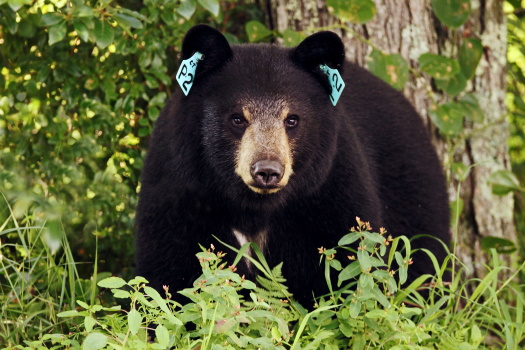Connecticut Department of Environmental Protection issued the following announcement on April 27.
Early spring is the time of year in which bear activity increases, and understanding that the vast majority of state residents are spending considerable amounts of time at home due to the COVID-19 pandemic, the Connecticut Department of Energy and Environmental Protection (DEEP) reminds residents that DEEP staff continue to be available to respond to situations involving black bears, and to take steps to reduce encounters and potential conflicts with bears.
These steps are increasingly important because Connecticut’s bear population continues to grow and expand. In 2019, approximately 7,300 bear sightings from 150 of Connecticut’s 169 towns were reported to the DEEP Wildlife Division. Residents of towns in western Connecticut should expect regular encounters with bears as they are now part of the environment.
“If you genuinely care about bears, you should never feed them – either intentionally or unintentionally,” said Jenny Dickson, DEEP Wildlife Division Director. “Bears become habituated, losing their fear of humans, when attracted to homes by easily-accessible food sources. Such bears spend more time in neighborhoods and near people, increasing public safety concerns, the likelihood of property damage, and the possibility that the bears may be hit and killed by vehicles or meet with some other misfortune.”
Connecticut residents should take the following simple steps to avoid problems with black bears:
NEVER feed bears.
Take down, clean, and put away birdfeeders by late March, or even earlier during mild weather. Store the feeders until late fall. Clean up spilled seed from the ground.
Store garbage in secure, airtight containers inside a garage or storage area. Adding ammonia to cans and bags will reduce odors that attract bears. Periodically clean garbage cans with ammonia to reduce residual odor. Garbage for pickup should be put outside the morning of collection and not the night before.
Bears will damage backyard chicken coops and kill chickens. Therefore, make sure coops and pens are sturdy and consider protecting them with electric fencing. Beehives, berry bushes, and other livestock can also be protected from bears with electric fencing.
Supervise dogs at all times when outside. Keep dogs on a leash when walking and hiking. A roaming dog might be perceived as a threat to a bear or its cubs.
Do not leave pet food outdoors.
Keep barbecue grills clean. Store grills inside a garage or shed.
Avoid placing meat scraps or sweet foods, such as fruit and fruit peels, in compost piles.
If you encounter a bear while hiking, make your presence known by yelling or making other loud noises. Never attempt to get closer to a bear to take a photo or video. If a bear does not retreat, slowly leave the area and find an alternate hiking route. If the bear persistently approaches, be offensive towards the bear – make loud noises, wave your arms, and throw sticks or rocks. Never run. While camping, keep a clean campsite, and make sure food and garbage are inaccessible (for example, keep food in a cooler stored in the trunk of a car and never have food in your tent).
In the rare instance when a bear appears to be aggressive toward people, residents should immediately contact the DEEP’s 24-hour dispatch line at 860-424-3333.
Bear sightings reported by the public provide valuable information to assist the DEEP Wildlife Division in monitoring the black bear population. Anyone who observes a black bear in Connecticut is encouraged to report the sighting on the DEEP’s website at https://portal.ct.gov/DEEP/Wildlife/Nuisance-Wildlife/Living-with-Black-Bears or call the Wildlife Division at 860-424-3011. Information on the presence or absence of ear tags, including tag color and numbers, is particularly valuable. A common misconception is that a tagged bear is a problem bear, and a bear with two ear tags was caught on two different occasions because it was causing problems. Actually, every bear receives two ear tags (one in each ear) the first time it is handled by DEEP. Most tagged bears have not been caught as problem bears, but rather as part of a project researching the state’s population.
To obtain fact sheets and other information about black bears, visit the DEEP’s website at https://portal.ct.gov/DEEP/Wildlife/Nuisance-Wildlife/Living-with-Black-Bears or contact the Wildlife Division.
A common misconception is that a tagged bear is a problem bear, and a bear with two ear tags was caught on two different occasions because it was causing problems. Actually, every bear receives two ear tags (one in each ear) the first time it is handled by DEEP. Most tagged bears have not been caught as problem bears, but rather as part of a project researching the state’s population.
Original source can be found here.

Source: Connecticut Department of Environmental Protection


 Alerts Sign-up
Alerts Sign-up